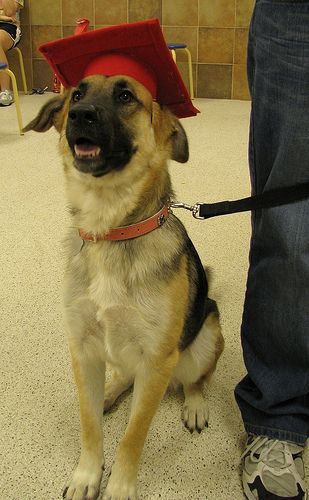Before the day begins with the rescue group here in the desert, I’ve been heading over to the neighbor’s for a visit. The veteran ranch dog has always been hopeful that I will take her.
So, I finally did. But the thing is, she is really a brat and manipulates people to no end.
And, as most people do, the neighbor obliges her every subtle request and so spends a lot of time petting her. If left unchecked, the dog gets more and more pushy as a result.
As a trainer I hate that, but the neighbor has no idea that he is reinforcing bad behavior. All he is aware of is that the dog and he are interacting and it is mutually rewarding for both him and the dog.
Personally, I want the dog to relax instead of being pushing, panting, and pacing.
When I require good behavior, the neighbor gets miffed. But he also thinks the dog doesn’t have much of a brain, and she does.
In fact, she has his number and gets him and a lot of other people to do what she wants.
Pets are really good at human behavior. They watch intently and then learn how to make their demands known–and most people oblige those demands.
Now in this case what has happened on the ranch is that people think this dog’s barking is cute. So, she barks all the time when someone appears, looks at her, or talks to her.
The humans have become the cue for barking. And the dog now barks inappropriately at just about everyone and everything.
I bet you can identify a few problem behaviors when YOU become the cue because you are reinforcing something.
Think about that a minute.
Now, I recently wrote about Cheyenne (Clicker Training Adventures & The 20 Minute Wonder) and wanted to share a little tidbit about the brainy little dog.
Part of her retention was due to the fact that “mom” would show off Chey’s schooling to any kids that came into the store. The difference was that her little dog would go through all her behaviors at once instead of doing what was asked.
It is a performance free for all.
This chaining of behaviors can happen when the animal is reinforced incorrectly, or when the pet parent doesn’t require a consistent behavior response.
In training a sequence of behaviors intentionally, we call it a behavior chain. One behavior is linked to another so that the performance is seamless.
I tend to like to keep an animal on its toes and vary performances but when you teach a chain, you usually start by outlining what you want and training the last behavior in the sequence first. Then you teach the behavior that comes before that one, and then the one that comes prior to that one, until you get to the beginning behavior.
The end result is that when you ask for the first behavior, the animal goes through the whole chain in sequence.
What happens in most pet households is that people get so excited that the animal is doing something when they ask, that they reinforce any response versus the one that is requested.
The attention is reinforcing and eventually the person or situation becomes the cue (or discriminative stimulus aka SD) for the behavior(s).
This links the behaviors together so that when the person appears, or asks for a behavior, the animal goes through all those they know at once.
When I worked at a world famous zoo, one of the elephants would rapidly perform all of her behaviors when a trainer appeared. The trainer was the cue to run through her repertoire.
In this case, I had to train her to pay attention but also to stand still and focus on what was being asked so that I could extinguish that behavior chain.
She enjoyed performing so much that she enthusiastically presented all she could at once–but the reality was also that it wasn’t clear to her what was required by the trainer. It just was not clear and most novices would accept what she offered.
So, if you ask an animal for a behavior and he or she responds with all they know, or a specific sequence, or when you simply appear on the scene and the animal offers a behavior or sequence–this could be what is happening.
Now, I am sure you have some stories. So please share them in the comments. Have you had this happen to you or have you seen animals that go through a bunch of behaviors at once? What are your thoughts on this topic?
Photo Credit: Anjuli



